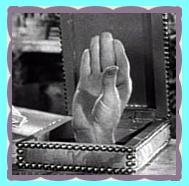 I may be dating myself with this question, but remember the TV show, “The Addams Family?” One of the “characters” on the show was “Thing.” It was portrayed as a hand that would occasionally rise up out of a box to perform some small task. Thing had no face, no specific identity, no role in family celebrations or tragedy. No one really paid much attention to it. It basically was a hand that, every once in a while, was helpful to the family.
I may be dating myself with this question, but remember the TV show, “The Addams Family?” One of the “characters” on the show was “Thing.” It was portrayed as a hand that would occasionally rise up out of a box to perform some small task. Thing had no face, no specific identity, no role in family celebrations or tragedy. No one really paid much attention to it. It basically was a hand that, every once in a while, was helpful to the family.
Think about the people you work with. How are they referred to in your business planning? Are they “Full Time Equivalents” (FTEs), or “Human Resources” or “Essential (or, worse yet, Non-essential) Personnel”? Are they “Budget Lines,” “Cost Centers,” “Talent” or “Revenue Generators?” Are your people viewed as a “Thing?”
Like Thing on The Addams Family, are your people given very little attention and just expected to be helpful once in a while? Do we hope they stay in their box and just come out when we need them?
As leaders, we must remember – and help others remember – that our most valuable resource are people, first. If we treat them like Thing, they will act like Thing. If we treat them as people, they will respond in kind.
Monster.com has a great book called “Finding Keepers,” all about hiring and keeping the best employees. The book concludes with this paragraph:
It comes down to this: do you treat people as human beings or do you treat them as assets, as commodities? If you don’t care about people, they’ll have a hard time caring about you. But if you care about them as employees, as friends, as partners in business, and as neighbors and colleagues, they’re bound to join you and stay engaged. Respect, recognition, and engagement are the essence of finding keepers.
How do you keep your organization from viewing people as a “Thing?”
Image from www.tvland.com

Eleanor,
Phenomenal post here…I love it! This gels very nicely with a conversation I had, just yesterday in fact, with the CEO of a mid-size company with about 100 employees and chronic issues around talent management and strengths-based leadership.
Thank you for sharing a clear, concise, relevant message!
Regards,
David Vittoria
David – thank you for reading and commenting on my post! I hope the message is helpful to the CEO you are working with. I appreciate the feedback! El